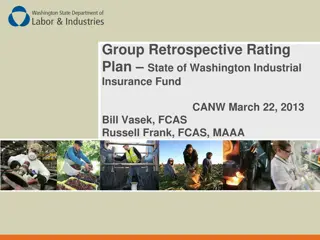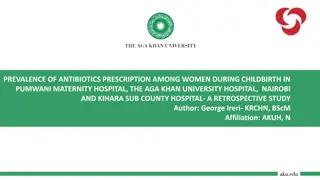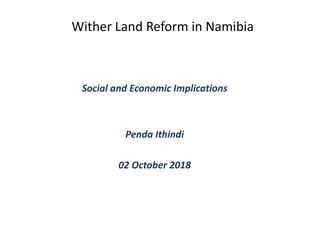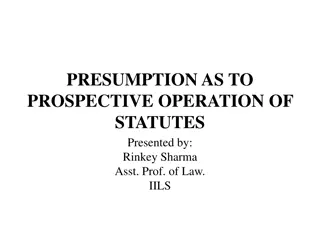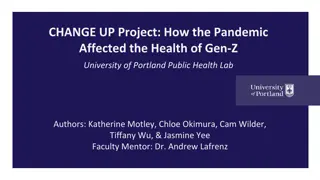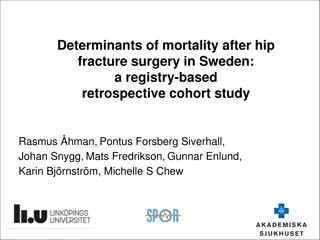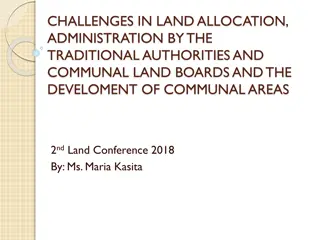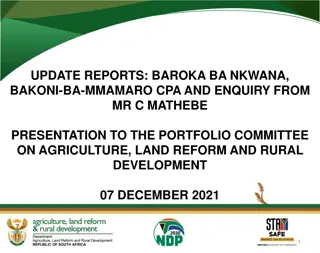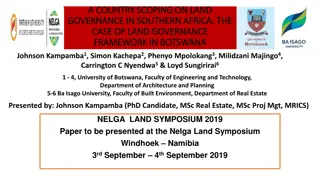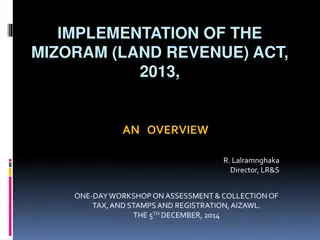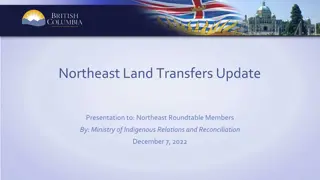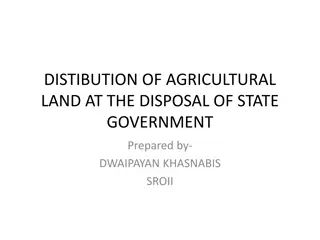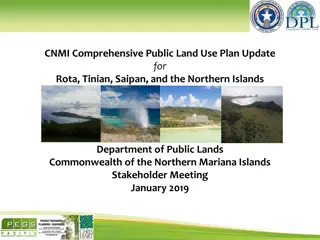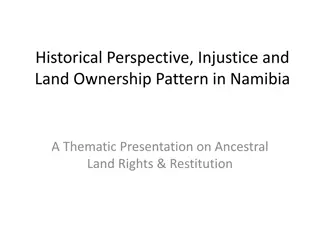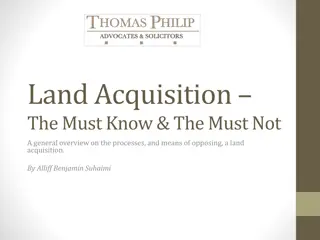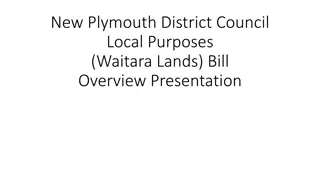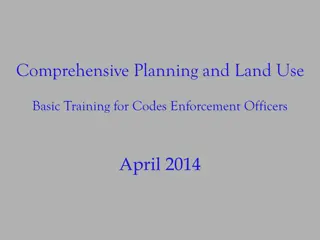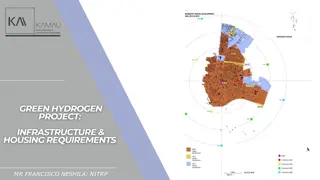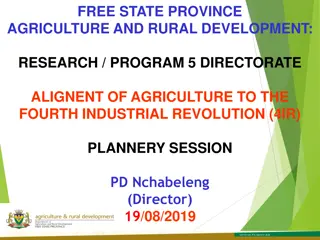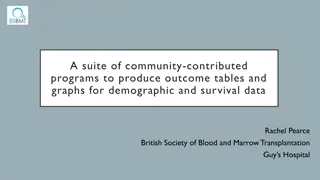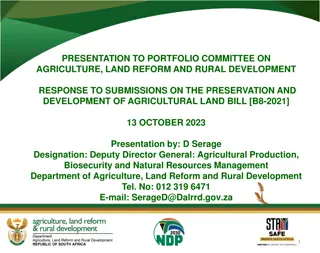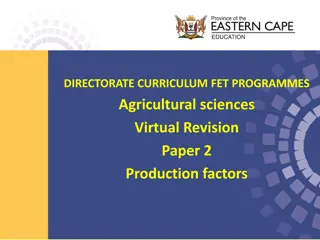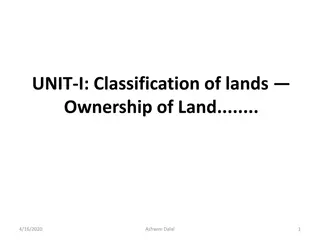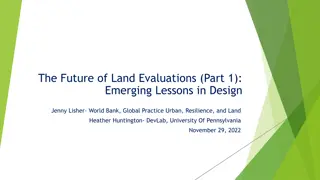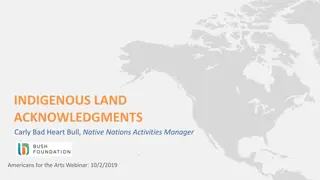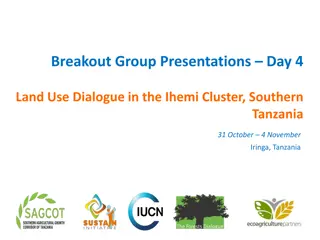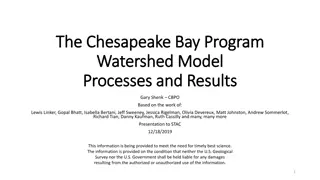Evolution of Seattle's Industrial Land: A Retrospective Analysis
Explore the historical transformation of industrial land in Seattle from early resource extraction to 21st-century resource and manufacturing, guided by policy adjustments and land use code changes to support a healthy economy. The city's emphasis on industrial zoning and economic diversity highlights the importance of industrial sectors in sustaining vibrant urban landscapes.
Download Presentation

Please find below an Image/Link to download the presentation.
The content on the website is provided AS IS for your information and personal use only. It may not be sold, licensed, or shared on other websites without obtaining consent from the author. Download presentation by click this link. If you encounter any issues during the download, it is possible that the publisher has removed the file from their server.
E N D
Presentation Transcript
INDUSTRIAL LAND IN SEATTLE A RETROSPECTIVE FOR THE PLANNING COMMISSION APRIL 12, 2018
EVOLUTION OF SEATTLES INDUSTRIAL LAND Replaced by Magic Mouse Yesler Mill, 1852
POLICY GUIDANCE Comp Plan says: Promote the use of industrial land for industrial purposes. Promote high value-added economic development by supporting growth in the industrial and manufacturing employment base. Restrict or prohibit uses that may negatively affect the availability, character, or function of industrial areas.
LAND USE CODE CHANGE - 2007 Reduced maximum size of retail and office uses to 25,000 and 10,000 sq. ft. Previous maximum sizes had been as high as 100,000 sq. ft.
WHY DOES THE CITY CARE? Growth Management Healthy Economy Efficient infrastructure Revenue
HEALTHY ECONOMY Economic Diversity Contributes to Resilience
HEALTHY ECONOMY About 1/6 of city employment Industrial wages are ~20% above citywide average >70% require high school or less education
HEALTHY ECONOMY 12% of City zoned Industrial 26% of firms in current location < 5 years 27% of firms in current location > 30 years Industrial vacancy rate currently under 2% and consistently lower than other sectors
INFRASTRUCTURE INVESTMENT Over $800 million in container terminal upgrades 4.2 million bushel grain terminal State highway connecting container terminals to I-5 and I-90 3 separate rail yards
CITY REVENUE 33% of City sales tax 32% of City B & O tax 87% of utility tax 18% of property tax
ENVIRONMENTAL CONCERNS Poor infrastructure, especially for non-industrial activities Contamination from previous uses Sea-level rise
WHY THINK ABOUT CHANGING INDUSTRIAL LAND? Growth needs land Desire for less expensive buildable land Frequent requests to redesignate industrial land on FLUM Speculation Take advantage of light rail stations
PREVIOUSLY PROPOSED COMP PLAN POLICY 1 Criteria for reviewing requests to remove land from a M/IC: Specify the use for the land Demonstrate there is no other land in the city suitable for that use Proposed use would not replace an industrial use Proposed use would not interfere with nearby industrial operations
PREVIOUSLY PROPOSED POLICY 2 Prohibit future use of Industrial/ Commercial (IC) zone in M/ICs https://encrypted-tbn0.gstatic.com/images?q=tbn:ANd9GcQ7qOsDo4fzJxSFXpH2cCZWlvoPc2MSpanZj7AXGBVG5q3d8gSk
MAYORS INDUSTRIAL LANDS ADVISORY PANEL 28 members Equally divided between 2 camps industry supporters and redevelopment advocates Working group of 8 4 from each camp + staff from OED, DCI, OPCD, SDOT, OSE, DON Full Panel has met about 6 times, working group sometimes every 2 weeks Working group has developed draft recommendations
ADVISORY PANEL DRAFT CONCEPTS - OPCD SODO Concept gives an incentive of large amount of office space in exchange for providing ~1.0 FAR of new industrial space in limited portion of Duwamish MIC I2C2 study effectiveness of IB, IC, C1 and C2 zones citywide and consider changes, consolidation, remapping Area studies in Interbay, East Ballard and Georgetown Adopt protective policies into Comp Plan or adjust FLUM process for land in MICs
ADVISORY PANEL DRAFT CONCEPTS OTHER DEPARTMENTS Platting and size-of-use regulations (SDCI) Revise noise ordinance to favor industrial businesses (SDCI) Increase funding for workforce training (OED) Revive support for industrial businesses (OED/SDCI)
OPCD UPCOMING INDUSTRIAL WORK I2C2 beginning 2018 Subarea studies for Interbay, Ballard and G town begin 2019 Feasibility study and EIS for SODO Concept under consideration
ADDITIONAL RESOURCES Numerous Studies prepared by: Seattle OED, DPD, City Council Port of Seattle Puget Sound Regional Council Washington Maritime Federation Urban Land Institute Others
QUESTIONS ? Tom Hauger, OPCD


